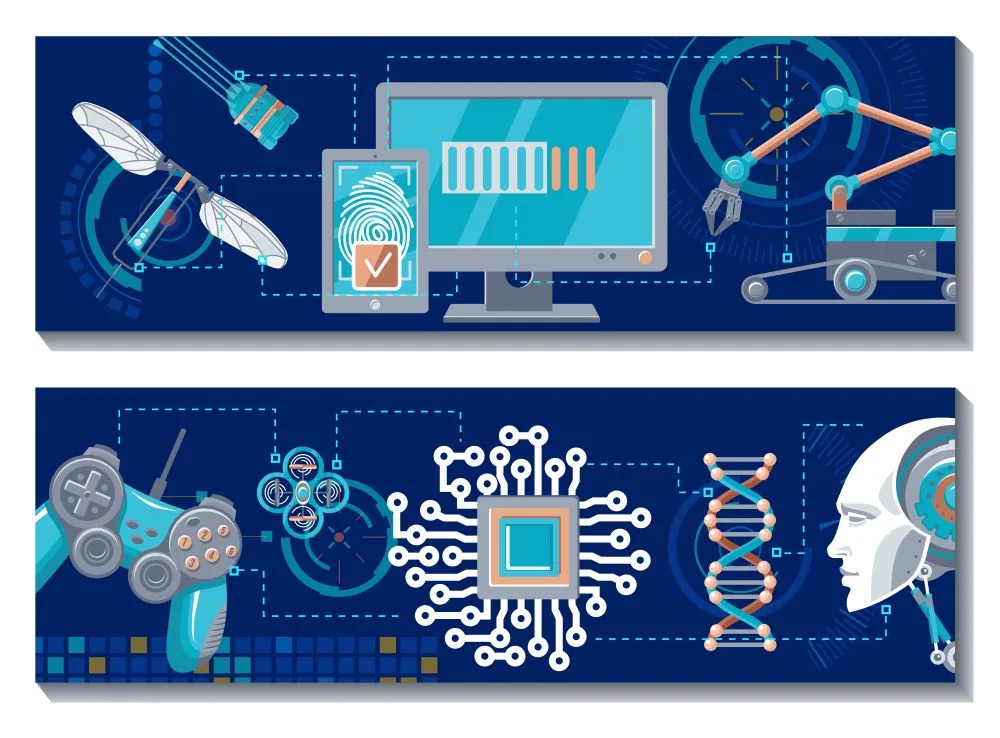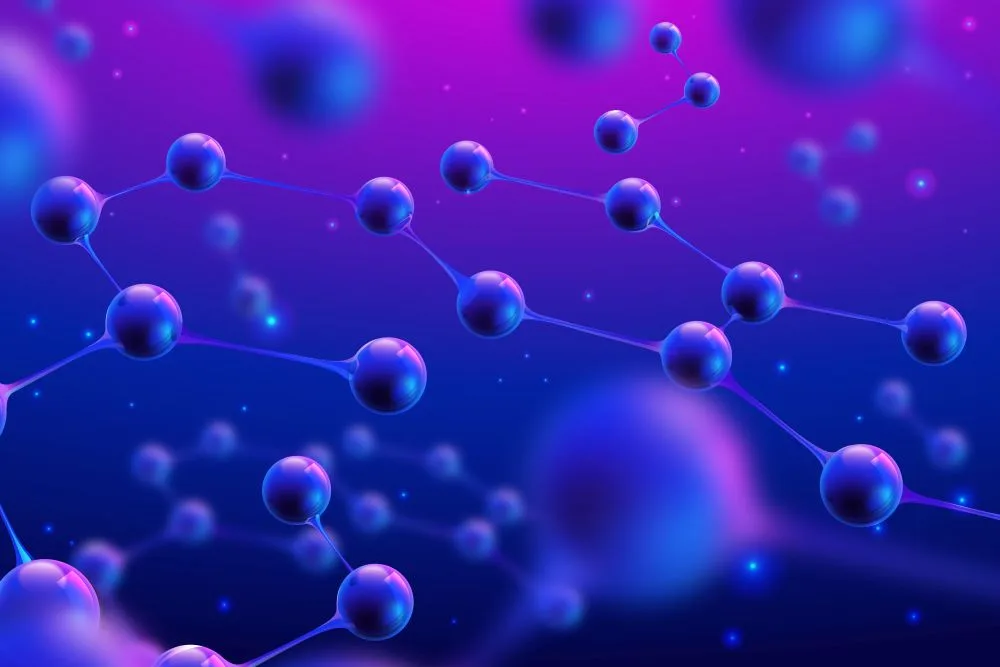Nanotechnology studies look into the behavior of molecules, atoms, and macromolecules in the range of 1-100 nanometers. It is roughly a billionth of a meter—very small! By researching the activity at this level, we can better understand how they work together. Nanotechnology is used to construct miniaturized structures, devices, and systems due to their small size.
When materials are broken down into nanoscale particles, the surface area increases relative to volume. This phenomenon is known as the quantum size effect and results in unique physical and chemical properties of a substance. At this small scale, the bulk properties of these materials can differ from their larger versions.
Scientists can benefit from the materials’ characteristics by manipulating their shape and size at a nanoscale. This has a broad array of implications that can be utilized as tools in medicine, computing, electronics, military applications, space science, and much more.
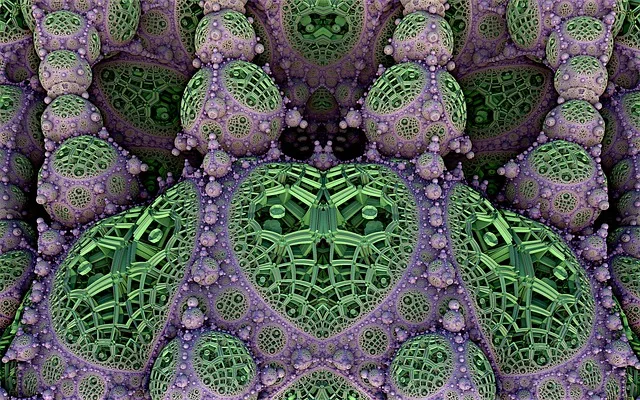
What are nanomaterials
Nanomaterials are materials engineered at the nanoscale, which is between 1 to 100 nanometers. These materials have unique properties advantageous in various applications such as energy storage and conversion, medical diagnostics and therapeutics, and water purification. Nanomaterials contain several elements, such as carbon, gold, silver, and titanium dioxide. They can also be formed into complex shapes and sizes, making them suitable for various industries. In addition to their unique properties, these materials are incredibly lightweight and durable.
Types of nanomaterials
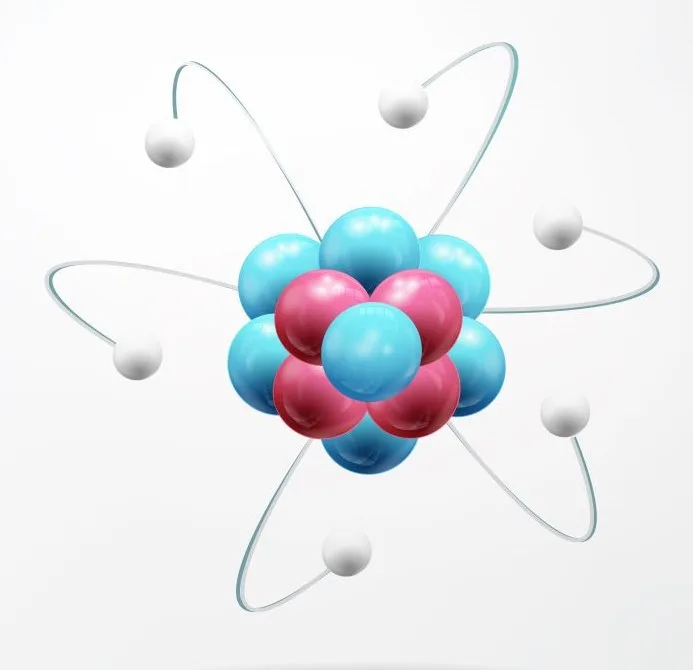
Inorganic-based nanomaterials
Commonly used nanomaterials include metal, metal oxide, and other nanoscale particles. These inorganic-based nanoparticles come in many forms, such as gold nanoparticles, quantum dots, superparamagnetic iron oxide NPs, and paramagnetic lanthanide ions. Several approaches are used for their synthesis, including Precipitation, Template-assisted spinning, electrospinning, sol-gel techniques, and Chemical Vapor Deposition (CVD).
Carbon-based nanomaterials
Nanomaterials containing carbon exist in various shapes, such as tubes, ellipsoids, or spheres. These materials include fullerenes, CNTs, graphene, and its derivatives like graphene oxide, nano-diamonds, and carbon-based quantum dots. Graphene was the most widely researched material in the past few years.
Organic-based nanomaterials
These materials consist of organic matter that is processed chemically, and some of it is naturally available. Organic nanomaterials consist of Liposomes, Dendrimers, Ferritin, and Micelles.
Composites
Composite-based materials are intricate structures that incorporate Nanoparticles in multiple forms. These particles may accumulate with each other or link to the biggest component of the material. The arrangement of these components on the nano-level forms a more complex framework. It has four types:
- Metal-matrix nanocomposites
- Ceramic-matrix nanocomposites
- Magnetic nanocomposites
- Polymer-matrix nanocomposites
Applications
Miniaturization techniques are particularly helpful in the pharmaceutical industry, boosting precision and allowing drugs to be better delivered and diagnosed. It has also opened up numerous advantages.
Read our article on 6 easy steps to remember in the world of PCB manufacturing to learn about miniaturized PCB fabrication.
Nanosystems have scope in the following areas:-
Nanomaterials for tissue engineering
In tissue engineering, nanomaterials serve different purposes:
- Bone repair
- Tissue regeneration
- Tissue repair and replacement
- Operating tools
- Implantable devices
- Implant coatings
Drug carrier system
According to recent research, global nanotechnology in the drug delivery market is expected to reach $122.7 billion by 2030. These results highlight the growing importance of this sector as it continues to evolve and expand globally.
Nanotechnology-based drug delivery systems are becoming more popular due to their advanced physical, chemical, and biological properties. The most commonly used carrier platforms include polymeric nanoparticles, liposomes, dendrimers, polymeric micelles, polymer-drug conjugates, and antibody-drug conjugates. These are categorized as:
- Stimuli-sensitive delivery system
- Multi-functional system
- Sustained and controlled delivery system
- Site-specific targeting
Carrier systems are significant in cancer treatment therapies, including chemotherapy, radiotherapy, surgery, and immunotherapy. Multiple nanotools are improving these therapies day by day. Carbon nanotubes are extremely useful in DNA mutation and disease protein biomarker detection. They can be a great asset when diagnosing health problems as they are highly sensitive to changes in the chemical composition of these molecules. Nanocarriers are a vital tool in the fight against cancer, as they can change the processing of a drug in the body. This special nanotool can also detect biomarkers or mutations in cancer cells and treat them accordingly, allowing for a targeted approach to cancer treatment.
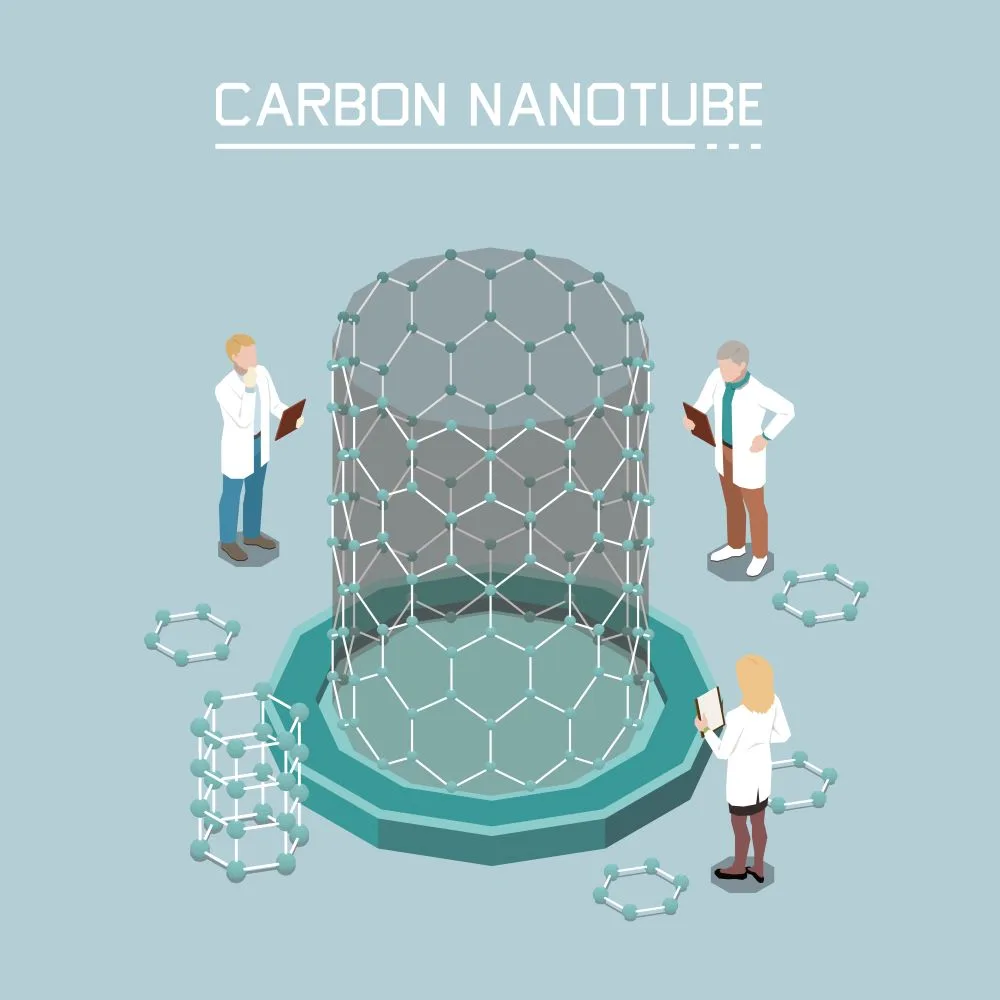
Implantable delivery systems
Nanoparticles are being researched as possible delivery systems due to their small size, controlled release, and steady kinetic rate. They are seen as preferable to intravenous carriers of liposome and ethosome due to their reduced potential for toxicity. These are extremely useful in many ways, such as reducing peak plasma levels and risk of adverse reactions, allowing for an extended and more predictable duration of action, reducing the need for frequent redosing, and improving patient acceptance and compliance.
Gene therapy
In gene therapy, a normal gene is inserted into the place of an abnormal and disease-causing gene with the help of a carrier molecule. Nanotechnology has provided effective and promising tools for systematic gene treatment, such as chitosan, gelatin and poly-1-lysine, and modified silica nanoparticles. Nanotechnology has been helpful in gene delivery, as it increases transfection efficiency while decreasing cytotoxicity. It ensures a more reliable and successful result.
Molecular diagnostics (molecular imaging)
Subcellular biological processes, like gene expression, protein-protein interactions, signal transduction, and cellular metabolism can all be characterized and quantified using imaging techniques such as magnetic resonance imaging, optical imaging, ultrasonic imaging, and nuclear imaging. Other medical applications are cell and tissue labeling, which enables long-term imaging. Additionally, it can be utilized for multicolor multiplexing, highlighting sub-cellular structures, and FRET plus MRI imaging. Nanomaterials, such as dendrimers, quantum dots, carbon nanotubes, and magnetic nanoparticles are replacing the traditional MRI agents. This shift is due to the materials’ efficiency, stability, and intensity when producing images with high intensity, photostability, and resolution along with immense resistance.
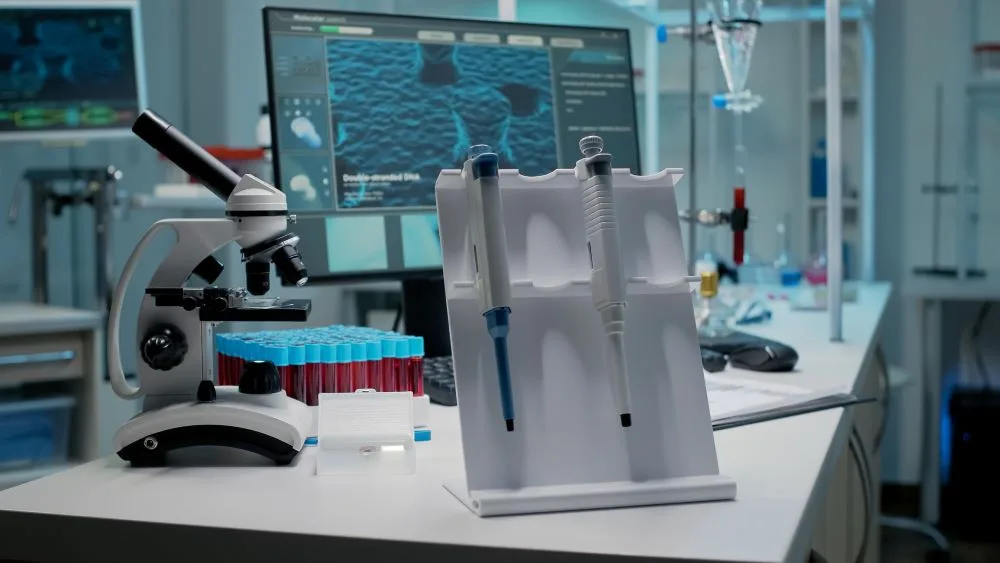
Biosensor and bio-labels
These tools detect pathological proteins and any physiological-biochemical indicators related to a disease or abnormal body metabolism. Biosensors offer an efficient way to measure biological elements. This system involves a bio-receptor that recognizes a biological material, a physiological component that detects changes, and a transducer that amplifies the signals and converts them into measurable forms.
Electronics
Nanoelectronics is the integration of nanotechnology in electrical instruments. The term “nanotechnology” encompasses a broad range of compounds, materials, and devices that all have one thing in common: their minuscule size. Due to this small size, their quantum mechanical abilities and interactions between atoms must be studied carefully. Many of these materials combine molecular and semiconductor elements, 1-dimensional nanowires, and nanotubes (such as Silver nanowires and CNTs) with advanced molecular engineering.
Nano-electronics appears in:
- Quantum Computers
- High-density storage devices
- CNT based Nanosensors
- OLED display
- Graphene Transistors
- Single Electron Transistor
Fuel cell
Nanotechnology offers an effective way of producing H from solar power in an economical, eco-friendly, and cost-efficient manner using water photo-catalysis. This para sheds light on the process of photo-catalytic H production. Recently, Nanostructured Materials have been developed for photocatalytic H Production. These materials improve the development of active nanostructured photocatalysts with larger surface areas to optimize light absorption and reduce charge carrier transport distances. It was concluded that photocatalytic H production offered tremendous potential to create a dependable and greener energy system and reduce greenhouse gas emissions.
Industrial
Nanotechnology is revolutionizing the product world. Currently, many items use nanomaterials, some of which you may not even be aware of. These products offer new features – from easy-to-clean to scratch-resistant – that we never had before. A wide range of products is being made with improved materials, such as automotive bumpers that are lighter and more resilient to stains, radiation-resistant ointments, stronger artificial bones, lightweight phone screens, and durable balls for various sports. Nanotechnology is revolutionizing the industry of modern textiles, making them smarter through embedded “wearable electronics.” These new products show immense promise, especially in cosmetics. Their potential applications range across industries and have a significant impact on businesses.
